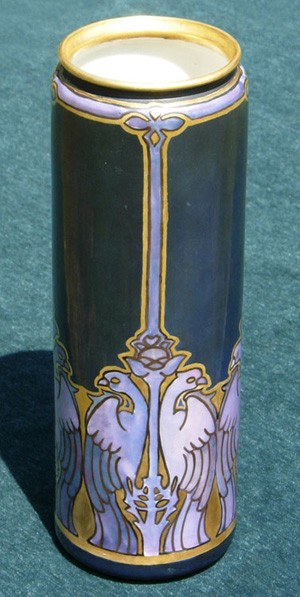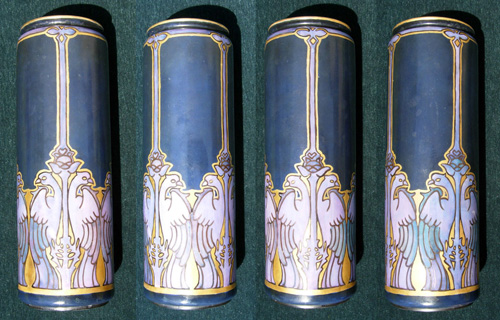
HAND PAINTED IRIDESCENT WILLETS BELLEEK VASE
Circa 1910, China paint and luster overglaze on vitreous china base,
12.25” inches tall, red Willets mark
As a successor to the Young Pottery, the Willets Brothers initially limited production to white ware pottery. In the mid-1880s, they hired key personnel from Ott and Brewer to develop a line of “Belleek” vitreous china, which imitated Irish porcelain. As head of the brothers’ “Belleek” department, Walter Scott Lenox developed an extensive array of Belleek pieces, which were produced at Willets from 1887 through 1909. The successor company, the New Jersey China Pottery Co., produced “Willets Belleek” until at least 1914. In addition to factory-decorated pieces, Willets sold an extensive line of undecorated ware to individuals and groups involved in China painting.
This vase was a Willets blank. The artist did not sign it unless you consider the fingerprints on the bottom, but it was hand painted by a Southern lady with considerable china painting skills. She was doubtless familiar with the design lessons of Arthur Wesley Dow and Ernest Batchelder and may even have copied this spectacular design from one of their articles, which appeared in magazines like Gustav Stickley’s Craftsman. Although Arts & Crafts-era artists used medieval Italian tiles as their inspiration, the double bird motif dates back at least to ancient Persia.
